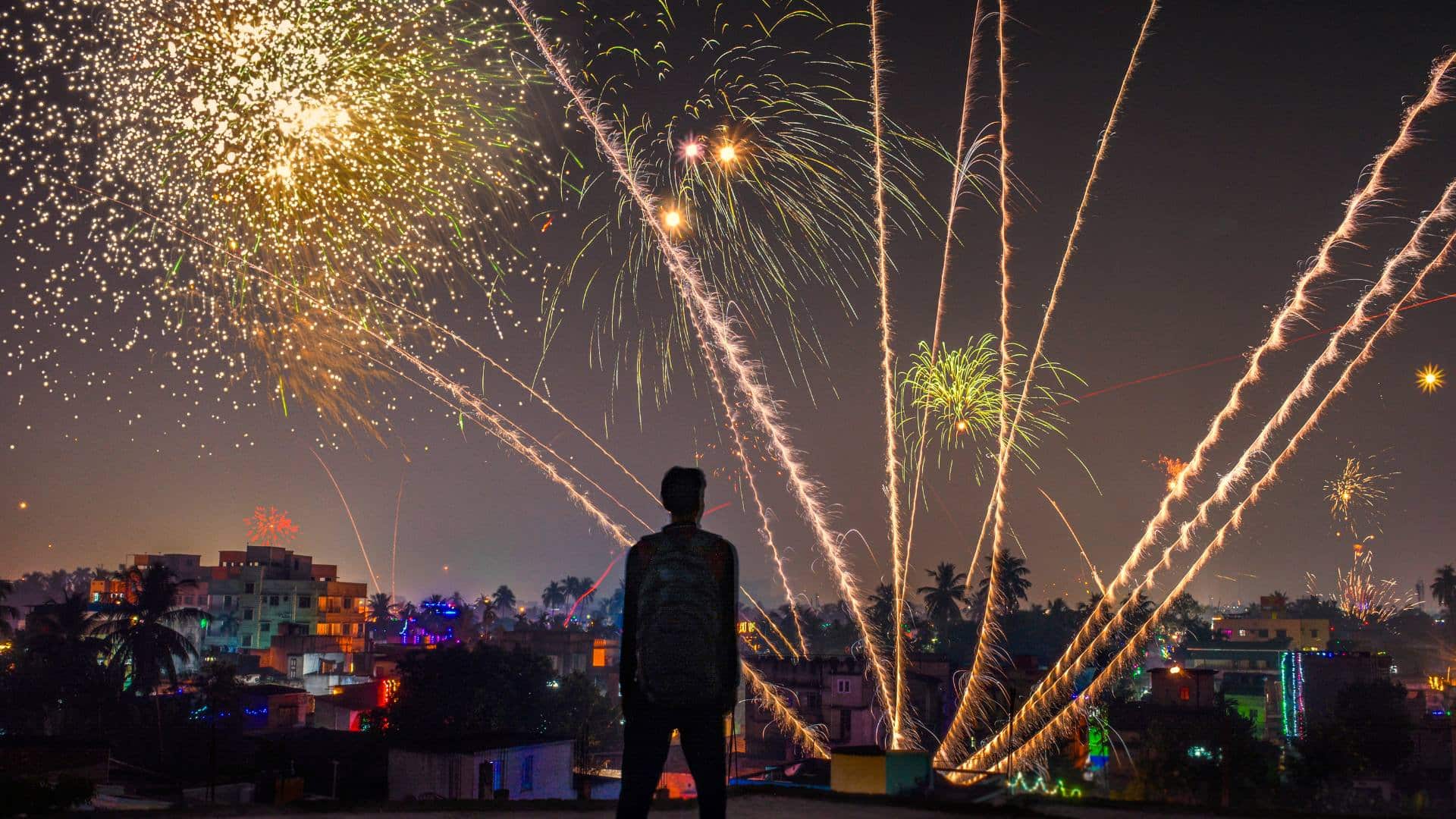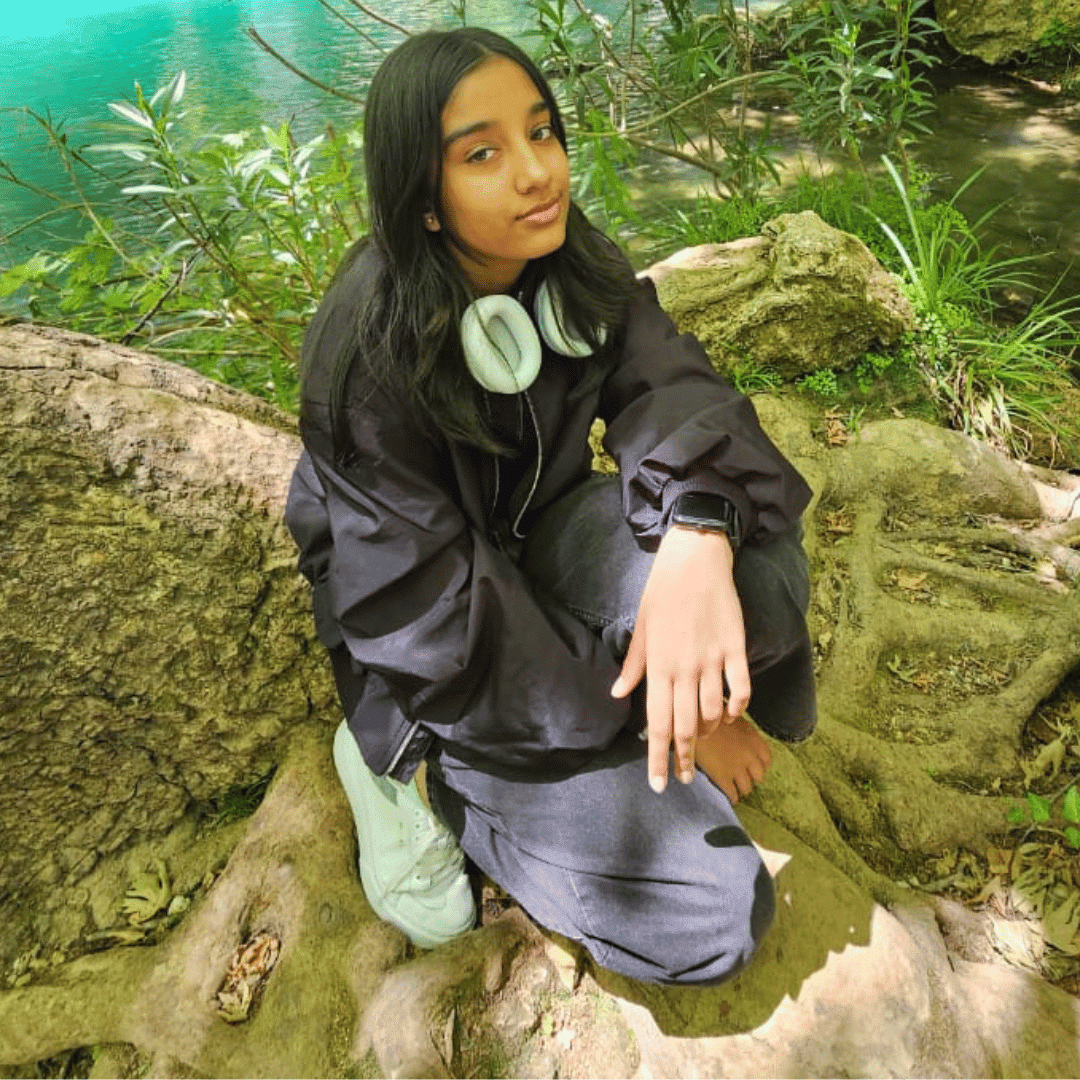With temperature inversion and climate change, the joyful meaning of a festival dissipates in the air we can’t breathe.

Fireworks during a Diwali celebration. (Credit: Getty Images)
This article, by high school student Anoushka Arbhi was produced out of News Decoder’s school partnership program. Anoushka is a student at VIBGYOR Group of Schools in India, a News Decoder partner institution. Learn more about how News Decoder can work with your school.
Every year on the 15th day of the month of Kartik on the Hindu calendar, Indians immerse themselves in the festival of Diwali.
According to Hindu mythology, it is a celebration for the return of Lord Rama to Ayodhya after a 14-year exile, following his victory over the vicious demon king, Ravana. People gather to celebrate, exchange gifts, burst firecrackers and ultimately have fun.
But because of something called temperature inversion, this ‘festival of lights’ celebrated in mid-autumn by hundreds of thousands of Indian homes is quickly becoming the festival of smog.
During winters, especially in urban areas, the air near the surface of the earth begins to cool rapidly, leaving no time for the upper layers of the air to follow in its footsteps.
This results in a stark difference of temperature between the air at the surface and the air above it, with the upper layers of air being much warmer than the lower. This causes the warmer layers to form a cap over the cooler ones, sealing them and preventing any forms of upward movement.
It usually occurs during the annual winter season, when the days are shorter, meaning less exposure to sunlight. This, along with long nights, makes the air cool faster than normal, hence causing temperature inversions to exist.
Of parties and pollution
According to the tri-seasonal calendar of India, winters usually last from mid-November to mid-March. And what else usually falls in the middle of November? Diwali.
The warmer air traps the layers beneath it, allowing movement only till a certain altitude, meaning no movement above the warmer layers.
Because of this, pollutants get trapped in this container-like part of the atmosphere, and the concentration of pollutants keeps on increasing as more pollution is produced.
There is a reason Diwali is known as the festival of lights. These lights can range from a simple fuljhadi (sparkler) to one of the largest firecrackers you have ever seen. And the brightest of explosions produce the darkest of smog.
Due to Diwali being smack in the temperature inversion season, all the smoke and pollutants produced from the explosion of large firecrackers (both at the surface and high up in the air), stubble farming surges and more get trapped the air we breathe. This is the reason why during winters the air quality indexes of Indian cities tend to skyrocket (no pun intended), showing all kinds of air pollution warnings.
Celebrating Diwali in my home town
The city of Pune, the place I’ve grown up in, seems to finally be taking the brunt of these ‘powers at play’.
Known as the ‘Oxford of the East’, the city is a hub for many prestigious educational institutes. But that’s not all. It is also the cultural capital of the state of Maharashtra. My city flourishes with old relics, especially from the age of the Maratha Empire.
But what really made my parents move here all those years ago, apart from the basics, like job opportunities and growing infrastructure, was the city’s fantastic weather — optimum temperatures and blue skies throughout the year, save for monsoon.
The best part was that it was predictable. The seasons had stark boundaries and rainfall occurred only during specific months, rarely ever sprinkling water during a season other than monsoon. Everyone who lived in this city knew precisely in which month one season would start and another end.
Bhagyashree Arbhi, a doctor and (proud to say) my mother, remembers. “When we first moved here, winters were much colder than [they are] now,” she said. “Rains were predictable, and the air felt … cleaner. As a doctor, I can comment that in the recent years, we’ve seen a rise in cases of allergic bronchitis and asthmatic attacks, especially during winter season.”
When the celebrations end
On 31 October, 2024, the air quality index of Pune, according to IQAir, was 143, putting it in the category of ‘unhealthy for sensitive groups’.
However, in a single day, the quality of air in Pune deteriorated from 143 to 167, bringing Pune’s air into the ‘unhealthy’ category. That day was the day of Diwali. And the quality of air has been fluctuating in this category ever since, with the most recent reading of an AQI of 232, taken on 9 January 2025.
Pune, known for its relatively happy weather and sunny skies, has woken up to gloomy mornings ever since Diwali.
Another more serious example is Delhi, the capital of India, that took a huge fall, from an AQI of 239 on 1 November 2024 to 601 on 9 January 2025 putting it in the final category there is: ‘hazardous’. That means that the air in this region can have adverse effects on all the residents.
Air Quality Guidelines set by the World Health Organisation are now a challenge to meet for almost the entire country.
The rates of respiratory infections and diseases are definitely something prominent, with the number of asthma patients alone being more than 30 million across the country. India now accounts for some 42% of all asthma deaths worldwide.
Even in places like Pune, where the weather was once deemed fresh, people are now warned to minimize outdoor exertion, and urged to wear a mask.
With a thick misty smog occupying our every morning, the settling of these pollutants and fine particles in the air have caused visibility rates to drop as low as 100 meters, hindering both basic, day-to-day travel, as well as flight departures and arrivals. Ask the question to yourselves: How much longer can we keep living like this?
The bursting of large, smoke-emitting firecrackers, surges in stubble farming across the country and temperature inversion are the reasons why the air is particularly grey during the festival of Diwali. However, the situation is not completely hopeless. We still have time to take action before it’s too late.
The most basic step anyone can take in order to lift the country from its AQI problem is to stop bursting firecrackers.
In an article for the publication IndiaSpend, Swagata Yadavar reported that excessive use of various kinds of firecrackers, like the anar (flowerpot), chakri (spinning firecracker) can produce emissions 200 to 2000 times more than the limit specified in the Air Quality Guidelines.
Let’s spread awareness.
We have to do something about this. A powerful way of implementing solutions is simply by spreading awareness. By sensitising the citizens of India on how grave the situation exactly is, we can bring about changes that wouldn’t have originally happened. With the presence of social media, grabbing the attention of the general public has never been easier. So instead of using the internet as a place to idly pass time, why not use it for something truly good?
As someone who’s lived in Pune their whole life, I have to take in this city’s smoggish air every day. It’s like breathing in the fumes of a burning pile of wood, except that it is permanent, and there’s no wood or fire in sight.
Every morning, I cross a bridge that runs over a river to go to school. Back when I was 8 years old, I could see all the trees, the water and the buildings and little hills in the distance. But now, those vibrant mornings have turned dull and grey. Now when I cross that same bridge, I see a grey sky and a blurry surrounding.
If I could go back in time and tell the 8-year-old me what it would be like, she’d probably laugh at me, as if I was joking.
But there is nothing funny about it.
Questions to consider:
1. What is temperature inversion?
2. What is the meaning behind Diwali?
3. What festivals have you celebrated where you live and would it be difficult abandon some traditions?

Anoushka Arbhi, lives in Pune, India. She loves writing and acting and all things creative. She ha a drive for world politics and climate change. But most importantly, she loves meeting new people, learning more about new experiences and sharing them with everyone.

Superb article.
Well done Anoushka.
Keep writing. All the very best!!
Excellent Article Anoushka.